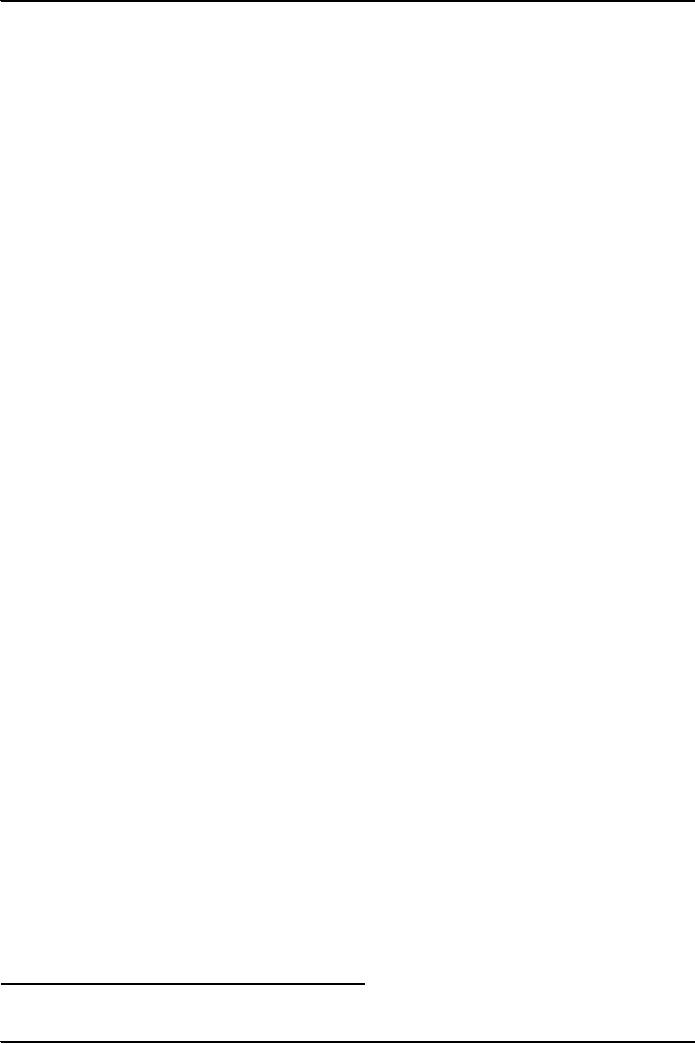 |
Control Procedures over Sales and Debtors |
| << SUFFICIENT APPROPRIATE AUDIT EVIDENCE AND TESTING THE SALES SYSTEM |
| Control Procedures over Purchases and Payables >> |

Fundamentals
of Auditing ACC 311
VU
Lesson
24
TESTING
THE SALES SYSTEM
Control
Objectives
For
many businesses, sales are
made on credit and so objectives
for the sales cycle includes
control debtors
as
well.
These
control objectives include:
a) Customers' orders
should be authorized, controlled and
recorded in order to execute
them
promptly
b) Goods shipped
and work completed should be
controlled to ensure that
invoices are issued
and
revenue
recorded for all
sales.
c) Goods returned and
claims by customers (for
example, in respect of damaged
goods) should be
controlled
in order to determine the liability
for goods returned and
claims received. .
d) Invoices and
credits should be appropriately checked
for accuracy and should be authorized
before
being
entered in the receivables'
records.
e) Authorized
customer transactions, and
only those transactions, should be
accurately entered in the
accounting
records.
f) There should be procedures to
ensure that sales invoices
are subsequently paid by customers
and
that
doubtful amounts are
identified in order to determine
any provisions or write offs
required
Control
Procedures over Sales and
Debtors
There
are a large number of controls that
may be required in the sales cycle
due to the importance of this
area
in any business and the
possible opportunities that
exist for diverting sales
and cash receipts away
from
the
business.
Typical
control procedures at key
stages of the sales cycle
are:
1.
Orders
2.
Dispatch
3.
Invoicing and credit
notes
4.
Returns inwards
5.
Receivables
6. Bad
Debts
(a)
Orders
(i)
Existing
customers should be allocated a credit
limit and it should be ascertained
whether this limit
is to be
exceeded if the new order is
accepted. If so the matter should be referred to
credit control.
(ii)
Any
new customer should be referred to the credit
control department before the order is
accepted.
(iii)
All
orders received should be recorded on
pre-numbered sales order documents so
that a check can
be
made that all orders
have been dealt with -a
completeness check.
(iv)
All
orders should be authorized before any
goods are dispatched.
(v)
The
sales order document should be used to
produce a dispatch note for the
goods outwards
department.
No goods may be dispatched
without a dispatch note.
(c)
Dispatch
(i)
Dispatch
notes should be pre-numbered and a
register kept of them to enable them to
be matched
with
relate to sales invoices and
customer orders.
(ii)
Dispatch
notes should be authorized before goods
leave the company.
(iii)
Regular
checks should be made to ensure
that all dispatches have
been invoiced.
(d)
Invoicing and credit
notes
(i)
Sales
invoices should be authorized by a responsible
official and matched with
the authorized order
and
dispatch note.
(ii)
All
invoices and credit notes should be
entered In daybook records, the
sales ledger, and
sales
ledger
control account. Batch totals should be
maintained for this purpose.
89

Fundamentals
of Auditing ACC 311
VU
(iii)
Sales
invoices and credit notes should be
checked for prices. casts
and calculations by a
person
other
than the one preparing the
invoice.
(iv)
All
invoices and credit notes should be
serially pre-numbered and regular
sequence checks should
be
carried out.
(v)
Credit
notes should be authorized by someone
unconnected with dispatch or
sales ledger functions.
(vi)
Copies
of cancelled invoices should be
retained.
(vii)
Any
cancellation of an invoice should lead to
a cancellation of the related dispatch
note.
(viii)
Cancelled
(and free of charge)
invoices should be signed by a
responsible official.
(ix)
Each
invoice should distinguish between
different types of sales
and, if relevant, different rates
of
VAT or
sales tax. Any coding of
invoices should be periodically checked
independently
(e)
Returns
(i)
Any
goods returned by the customer should be
checked for obvious damage
and, when accepted. a
document should be
raised.
(ii)
All
goods returned should be used to prepare
appropriate credit notes
(f)
Receivables/Debtors
(i)
A
receivables ledger control
account should be prepared regularly and
checked to individual
sales
ledger
balances by an Independent
official.
(ii)
Receivables
ledger personnel should be independent of
dispatch and cash receipt
functions.
(iii)
Statements
should be sent regularly to
customers.
(iv)
Formal
procedures should exist for
following up overdue debts which should
be highlighted either
by the preparation
of an aged list of balances or by the
preparation of regular customer
statements.
(v)
Letters
should be sent to customers for
collection of overdue debts. A policy
should be in place for
the
Institution of legal proceeds
where appropriate.
g) Bad
debts
(i)
The
authority to write off a bad
debt should be in writing. Appropriate
adjustments should be
made
to the sales ledger and the
control account
(ii)
The
use of court action or the writing-off of
a bad debt should be authorized by an
official
independent of the
cash receipt
function.
Tests
of Control
Tests
of control should be designed to check
that the control procedures
are being applied and
that
objectives
are being achieved. Tests
may be appropriate under the following broad
headings.
(a)
Carry out sequence test
checks on invoices, credit notes,
dispatch notes and orders.
Ensure that all
items
are included and that there
are no omissions or duplications.
(b)
Check the existence of evidence
for authorization in respect
of:
iii.
acceptance
of the order (the creditworthiness
check)
iv.
dispatch
of goods
raising
of the invoice or credit note
v.
vi.
pricing
and discounts
vii.
Write
off debtors as bad
debts.
Check
both that the relevant signature
exists and that the control
has been applied.
(c)
Seek evidence of checking of the
arithmetical accuracy of:
viii.
invoices,
including pricing, and VAT
and sales tax
calculations
ix.
credit
notes,
This is
often done by means of a 'grid
stamp' containing several
signatures on the face of the
document.
Ensure
that the control has been
applied by checking the accuracy of such
invoices and credit
notes.
(d)
Check dispatch notes and
goods returned notes to ensure
that they are matched with
invoices and
credit
notes.
(e)
Check that control account
reconciliations have been performed
and reviewed.
In all
cases, tests should be performed on a
sample basis.
90
Table of Contents:
- AN INTRODUCTION
- AUDITORSí REPORT
- Advantages and Disadvantages of Auditing
- OBJECTIVE AND GENERAL PRINCIPLES GOVERNING AN AUDIT OF FINANCIAL STATEMENTS
- What is Reasonable Assurance
- LEGAL CONSIDERATION REGARDING AUDITING
- Appointment, Duties, Rights and Liabilities of Auditor
- LIABILITIES OF AN AUDITOR
- BOOKS OF ACCOUNT & FINANCIAL STATEMENTS
- Contents of Balance Sheet
- ENTITY AND ITS ENVIRONMENT AND ASSESSING THE RISKS OF MATERIAL MISSTATEMENT
- Business Operations
- Risk Assessment Procedures & Sources of Information
- Measurement and Review of the Entityís Financial Performance
- Definition & Components of Internal Control
- Auditing ASSIGNMENT
- Benefits of Internal Control to the entity
- Flow Charts and Internal Control Questionnaires
- Construction of an ICQ
- Audit evidence through Audit Procedures
- SUBSTANTIVE PROCEDURES
- Concept of Audit Evidence
- SUFFICIENT APPROPRIATE AUDIT EVIDENCE AND TESTING THE SALES SYSTEM
- Control Procedures over Sales and Debtors
- Control Procedures over Purchases and Payables
- TESTING THE PURCHASES SYSTEM
- TESTING THE PAYROLL SYSTEM
- TESTING THE CASH SYSTEM
- Controls over Banking of Receipts
- Control Procedures over Inventory
- TESTING THE NON-CURRENT ASSETS
- VERIFICATION APPROACH OF AUDIT
- VERIFICATION OF ASSETS
- LETTER OF REPRESENTATION VERIFICATION OF LIABILITIES
- VERIFICATION OF EQUITY
- VERIFICATION OF BANK BALANCES
- VERIFICATION OF STOCK-IN-TRADE AND STORE & SPARES
- AUDIT SAMPLING
- STATISTICAL SAMPLING
- CONSIDERING THE WORK OF INTERNAL AUDITING
- AUDIT PLANNING
- PLANNING AN AUDIT OF FINANCIAL STATEMENTS
- Audits of Small Entities
- AUDITORíS REPORT ON A COMPLETE SET OF GENERAL PURPOSE FINANCIALSTATEMENTS
- MODIFIED AUDITORíS REPORT